#electronic work in singapore
Explore tagged Tumblr posts
Text
#best electrical work#electronic work#electronic work in singapore#best electronic work in singapore#house electronic service#local electronic service in singapore#best electronic service#bw construction ltd#bwconstructionltd#bwconstructionpte#world best construction company#bw#bw construction#world best construction#bwconstructioninsingapore
0 notes
Text
A team of chemists and materials scientists at the National University of Singapore, working with colleagues from Manchester University, in the U.K., and Guangdong University of Technology, in China, has developed a type of sponge made of graphene oxide and chitosan, that can be used to extract gold from electronic waste. In their paper published in the Proceedings of the National Academy of Sciences, the group describes how they made their sponge and how well it worked during testing.
Continue Reading.
52 notes
·
View notes
Text

Graphene oxide and chitosan sponge found to be ten times more efficient at removing gold from e-waste
A team of chemists and materials scientists at the National University of Singapore, working with colleagues from Manchester University, in the U.K., and Guangdong University of Technology, in China, has developed a type of sponge made of graphene oxide and chitosan, that can be used to extract gold from electronic waste. In their paper published in the Proceedings of the National Academy of Sciences, the group describes how they made their sponge and how well it worked during testing. Prior research has shown that removing gold, silver and other metals from electronic equipment that is no longer useful, as a way to recycle such materials, is a difficult and often dirty business. Quite often it results in low yields and the generation of a variety of toxic pollutants.
Read more.
#Materials Science#Science#Graphene#Chitosan#Biomaterials#Waste#Electronics#Materials processing#Gold
15 notes
·
View notes
Text
Aespa 5th member

Facts about Aespa Julia:

Julia speaks 4 languages: English; Mandarin; Japanese and Korean.
Julia was born in Singapore, so her first languages wore English and mandarin, since her mom is of Chinese descent. When she moved to Tokyo she studied in an international school; where she learned Japanese and English, therefore she speaks fluent Japanese as well. She learned mandarin fluently since she constantly speaks with her mom’s side of the family. She never really learned Greek, just a few words, because her dad always spoke in English with her and eventually Japanese too. She learned Korean as soon as she joined SM, and became fluent towards the years. As she was a member of Iz*one, talking with the Japanese members helped her perfect her Japanese.
Her mom’s name is Xiāng (香) Lim (林), she is 50 years old and she is a forensic scientist, and currently works in the Singapore Police Department.
Her dad’s name is Alexander (Ἀλέξανδρος) Dracos (Δράκων), he is 48 and is a forensic psychologist; working at the Singapore police department with his wife.
Julia got diagnosed with anxiety disorder and depression in 2019, she continued being medicated and she advocates for mental health. She also deals with social anxiety and is afraid to open up to people, so when she was new to the industry people taught she was mean because of the fact she rarely smiled. Nowadays people see that’s just her personality.
She is an INTJ-A
Her favorite movie genre is horror/suspense
She games quite often and is very good at it.
Her favorite tv show is Hannibal.
She doesn’t have a specific favorite music genre but she likes rock, electronic , experimental and noise music the most.
Julia’s favorite aesthetic is cybercore and vampirecore
When she was younger she wanted to be many things, but mainly a fashion designer.
Julia AE concept:
Her representative emoji: 🧬

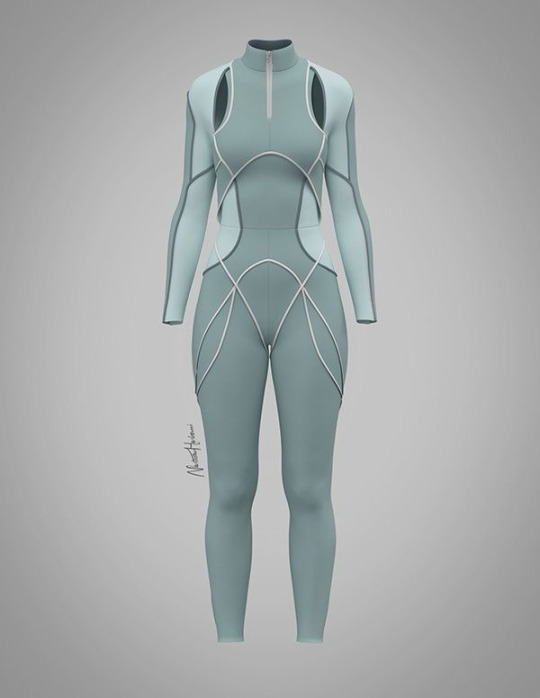
#kpop#kpop added member#kpopdr#aespa oc#aespa imagines#aespa 5th member#aespa addition#aespa#aespa moodboard#kpop imagines#kpop gg#Spotify
13 notes
·
View notes
Note
what do you think of the new tech changes in 2026??? :D :D
With the new regs there's like two sides to me.
One is the one that wants to study propulsion and wants more engine dependent cars than electronics.
The other is the one that thought if I wasn't gonna study aerospace engineering, I'd go into environmental engineering. And I believe the fact that they're aiming for Net Zero by 2030 is admirable.
I also like the idea of lighter/smaller cars *altho i don't think removing 30kg is THAT huge a weight difference for all they made a ton of noise about it* and the increased fuel efficiency but I don't understand how reducing downforce by 30% is gonna help anyone on the increasing number of street tracks they're adding to the calendar *my aerodynamics might be a bit bleh, don't take my word for it*. The reason that Redbull was struggling in Monaco this year and Singapore last year is because their package is a low downforce one.
Then the battery dependence is a fun bit. I'm really looking forward to how that's gonna work out. The battery recovery and power harvesting.... that's something that tickles my brain nicely.
But again, we can't say much unless we see all this stuff in action. A lot of people had reservations about Vegas as a track, but at the end everybody liked it.
#formula one#f1#f1 2026 regulations#f1 2026#f1 analysis#formula 1#f1 nerding out#nerd session#nerd alert#aerodynamics talks
6 notes
·
View notes
Note
Found my essay about south-east asia,,
Sorry if it's not similar to what you are learning bc mine is really different,,
Anyway discord not working rn bc of bad wifi.
So here,,
──────────────────────────────
South-East Asia is a vast region stretching from Myanmar in the west to Papua New Guinea in the east. Home to over 600 million people, it is a diverse and vibrant area with deep cultural and historical roots.
One of the most influential aspects of South-East Asia is its rich and diverse cultures. The region boasts over 300 languages and hundreds of ethnicities, each with their own unique customs, traditions, and beliefs. These diverse cultures are reflected in the region's architecture, food, and arts, creating a richness and depth that is unmatched in any other part of the world.
The region's economy is also diverse, with many countries emphasizing different industries. Singapore, for example, is a major financial hub and one of the world's leading trading centers. Vietnam, on the other hand, is an industrial powerhouse, producing goods such as clothing, shoes, and electronics.
In terms of history, the region has a long and complex past. Countries such as Malaysia, Indonesia, and the Philippines have rich histories dating back to at least the 7th century CE. The region was also conquered by various empires throughout history, including the Chinese, the Japanese, and the European colonial powers. These events have shaped the region's culture and identity in significant ways, creating a unique and resilient people.
One of the most pressing issues in South-East Asia is poverty. Many countries in the region struggle with high poverty rates, with some countries having over 25% of their population living below the poverty line. Additionally, inequality and lack of social mobility are major challenges in many countries, with the elite few holding most of the wealth and power.
In spite of these challenges, South-East Asia continues to be a hub of innovation and economic growth. Countries in the region are investing heavily in education, infrastructure, and technology, with many countries on track to become upper-middle-income countries by 2030.
In conclusion, South-East Asia is a region of unparalleled diversity and complexity, with a rich cultural, historical, and economic legacy. While it faces many challenges, it is a region with great potential for growth and development in the years to come.
Despite the economic and cultural diversity of countries in South-East Asia, the region faces many shared challenges, including poverty, inequality, and environmental degradation. One of the biggest environmental issues facing the region is deforestation and land degradation, which are caused by agricultural practices, logging, and mining. In addition, South-East Asia is particularly vulnerable to natural disasters, including floods, cyclones, and droughts, which can cause great damage to infrastructure and human populations. Climate change is also a major concern in the region, with rising sea levels, increased temperatures, and more frequent extreme weather events.
In terms of human rights, the region has a mixed record. While some countries have made significant progress in protecting and promoting human rights, others have been criticized for human rights abuses, including political repression, discrimination against minorities, and restrictions on freedom of speech and expression.
Despite these challenges, South-East Asia is poised to play an increasingly important role on the global stage. The region's rapidly growing economy and young, educated population make it an attractive destination for investment and trade, while its strategic location in the heart of Asia makes it a critical player in the regional and global geopolitical landscape. South-East Asia is also home to some of the world's most important environmental ecosystems, including the Amazon rainforest and the Coral Triangle, both of which are critical for biodiversity and climate regulation.
In conclusion, South-East Asia is a region of great diversity and potential, with unique cultural and historical traditions, strong economic growth, and a vital role to play in global affairs. While the region faces many challenges, from poverty and inequality to environmental degradation and human rights abuses, it is also a region of opportunity, with the potential to become a major player on the global stage and a beacon of hope for a better future.
──────────────────────────────
Hope this is good enough for you!!
I have like alot of essays about my history lessons bc my teacher told us to write essays alot and i lost count of how much words this is,,

—Sev
“ THANKS POOKS!!! ^^ ”
3 notes
·
View notes
Text

BAE Systems will improve GPS technology in the Eurofighter Typhoon
Fernando Valduga By Fernando Valduga 11/17/2023 - 14:00 in Military
After successful activities to demonstrate functional compatibility and feasibility of physical installation, BAE Systems' Digital Anti-jam GPS Receiver (DIGAR) was selected to continue in the next phase of the Phase 4 Improvements (P4E) capability program on the Eurofighter Typhoon aircraft.
DIGAR will increase the protection of the aircraft against GPS signal interference, falsification and radio frequency (RF) interference, so that pilots can perform their missions in the most contested RF environments.
DIGAR uses advanced electronic antenna, high-performance signal processing and digital beam formation for significantly improved GPS signal reception and superior interference immunity. These capabilities considerably increase the level of protection against GPS interference and are critical for combat aircraft while maneuvering in a contested battle space.
The fighter will also receive the new GEMVII-6 airborne digital GPS receiver from BAE Systems which, when coupled to the electronic unit of the DIGAR antenna, allows the platform to conduct high-capacity digital beam formation anti-jamming.
“Modern fighters require accurate positioning and navigation data for mission success in GPS-contested environments,” said Luke Bishop, director of Navigation Systems and Sensors at BAE Systems. "Our DIGAR antenna electronic components and GEM VII GPS receivers are reliable to protect these vital platforms in GPS-challenged environments to support mission success."
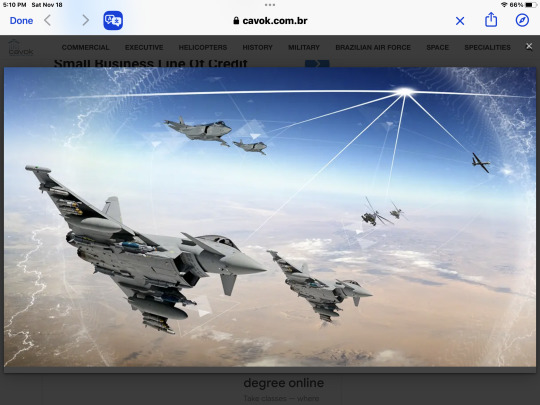
The Eurofighter Typhoon is the backbone of the combat to air defense of the United Kingdom and several of its main European and international allies. Serving nine nations, it provides 24/7 air security, 365 days a year and is in frontline operations, including NATO's ongoing air policing throughout Eastern Europe.
BAE Systems, as part of the Eurofighter consortium of four countries behind the aircraft, is continuously investing in the Typhoon jet to maintain its cutting-edge military capability.
In addition to the Typhoon, DIGAR is also installed on the F-16, F-15 and other special-purpose aircraft in the U.S., such as air interdiction and force protection platforms, intelligence, surveillance and reconnaissance aircraft and unmanned aerial vehicles.
Leveraging more than 40 years of GPS experience, BAE Systems' GPS product family offers suitable size, weight and power characteristics for a variety of applications, including portable electronics, precision guided ammunition, unmanned aerial vehicles, vehicles and aircraft.
The work at DIGAR and GEMVII takes place at BAE Systems' facilities in Cedar Rapids, Iowa, where the company invested in a state-of-the-art engineering and production center with 25,800 square meters.
Tags: Military AviationBAE SystemsEurofighter TyphoonGPS
Sharing
tweet
Fernando Valduga
Fernando Valduga
Aviation photographer and pilot since 1992, has participated in several events and air operations, such as Cruzex, AirVenture, Dayton Airshow and FIDAE. He has work published in specialized aviation magazines in Brazil and abroad. Uses Canon equipment during his photographic work in the world of aviation.
Related news
MILITARY
USAF completes new round of missile tests on the F-35
11/17/2023 - 08:00
MILITARY
IMAGES: USAF retires the last E-8C JSTARS aircraft
16/11/2023 - 21:37
Czech Air Force Gripen during Tiger Meet 2023. (Photo: Giovanni Colla)
MILITARY
IMAGES: Gripen Fighters at NATO's Tiger Meet 2023
16/11/2023 - 18:46
MILITARY
Commercial tanker refueled USAF fighters that were going to exercise in Singapore
16/11/2023 - 16:00
HELICOPTERS
Ukraine will receive a Black Hawk helicopter through crowdfunding
16/11/2023 - 12:30
AERONAUTICAL ACCIDENTS
Accident with two Indonesian Air Force Super Tucanos
16/11/2023 - 09:29
13 notes
·
View notes
Text
Afla Sackey & Afrik Bawantu - Destination
Wah Wah 45s are proud to present the debut LP on the label from Ghanaian vocalist and djembe drummer Afla Sackey. With his band Afrik Bawantu, he has fulfilled the dream of blending traditional Ghanaian music with sizzling Afrobeat grooves, topping it off with an irresistibly funky twist! Their unique blend of vibrant African rhythms with brisk, animated horn sections and heavy bass-lines bring a fresh perspective to the Afrobeat genre. Afrik Bawantu released their debut EP, Noko Hewon, back in 2013 to much critical acclaim, and went on to be nominated in the World Music Network’s charts. In 2014 they released their debut LP, Life On The Street, which showcased the original style of Afla’s compositions, as well as his group of gifted musicians. Afla himself was born in Ghana and started his creative life as a dancer with the country’s famous Bukom Ensemble, known for their infectious folk-driven rhythms. His elders soon soon recognised the musical potential of young Afla and encouraged him with careful guidance and training. This provided the foundations upon which Sackey has developed his career in music and dance. Upon moving to London, which was made possible by the Kakasitsi Master Drummers Of Ghana, Afla undertook a masters degree at Guildhall college, from which he graduated in 2012. With his wealth of experience in music and dance, Afla went on to become an inspiring educator, providing workshops and training to a diverse range of students from primary schools to universities. He has taught Afrobeat and Afro Jazz at the Royal Academy of Music where he still often appears as a guest lecturer, as well as acting as a workshop facilitator in places as far flung as Japan, Singapore and Argentina. Afla is a great collaborator, and has worked with legendary artists such as the Sun Ra Arkestra, Ginger Baker and Tony Allen, as well as his contemporary projects with Ibibio Sound Machine, Sons Of Kemet, Dele Sosimi, The Estuary 21, Eparapo and his most recent Afro-electronic project with producer Raz Olsher - Raz & Afla. Afla Sackey - Percussion, lead vocals Louis Pocock - Drums James Wilson - Bass Oscar Jerome - Lead guitar Henry Lawry - Trumpet, backing vocal Jack Thrush - Tenor sax Harry Greene - Baritone sax, rhythm guitar Axel Kaner Lidstrom - Trumpet Andrew Woolf - Tenor sax Laura Mills - Backing vocals Alexis Krainou - Guitar solo on Sane Ye Written,arranged and produced by Afla Sackey Artwork by Tokio Aoyama
3 notes
·
View notes
Text
My-Desk.Co

At My-Desk.Co, we specialize in crafting custom furniture in Singapore, offering bespoke desks tailored to your unique needs. As a premier custom desk maker, we provide personalized, handcrafted desks for both home and office settings. Our extensive collection includes electronic adjustable height desks designed for ergonomic comfort and flexibility for work or study, as well as sit-stand desks for L-shaped configurations. We also offer a variety of other solid wood furniture, such as classic fixed height desks, music studio desks, folding desks, cabinets, shelving, and even libraries. Our office desks range from modern and executive styles to small and large desks with storage solutions. Our study desks cater to students and home use, featuring ergonomic and solid wood designs. Whether you're looking for a custom wood desk, L-shaped desk, irregularly shaped desk, small desk, long desk, solid wood cabinets, or libraries, My-Desk.Co delivers exceptional quality and tailored solutions to enhance your workspace.
2 notes
·
View notes
Note
Why are you making a fuss about sbux now? Even though the leader of Nct is GBA Loewe and BA Benefit Cosmetics which is part of LVMH which is owned by Bernard Arnault and he invests in Israeli companies.
https://boycott.thewitness.news/categories/cosmetics
https://boycott.thewitness.news/categories/clothing
Why don't you also boycott Lisa, she is the girlfriend of Frederic Arnault aka son of Bernard Arnault the owner of LVMH who supports israel companies
https://vt.tiktok.com/ZSY6AFCqA/
https://vt.tiktok.com/ZSY6StMgM/
https://vt.tiktok.com/ZSY6AFSXx/
---------
Link, Link2, Link3, Link4, Link5
It's because "target" was painted on SB. So people follow where they are told to go without asking questions and making their own investigations and decisions. When people are in distress, they want an easy solution, so they grasp at anything that will make them think they are making a change, are in control, that will allow the anxiaty to be released at something, the energy of worry spent.
One can find dirt on any big company. Coca-Cola still leads people in Mexico to diabeties and early death with the help of agressive advertisement and lies about health repercussions. Most fashion brands use leather from factories that use illegal immigrant labourers who live close to slave conditions. Unilever that produces Aqua water among other things is well known for grasping water resources and depriving locals of access to water (directly or price wise).
I had a thought about fanwars recently. How some people are looking for fights. Psychiatrists say most of us are living in too much of a safe environment, while our brains where made to constantly look out for danger, to worry, to be anxious and cautious to stay alive. Yes, we are very stressed from school, work, bad news, but it's not real live threatening danger. And so there is this programme, the need to find danger and to spend energy on escaping it, in a sense. It leads many people to invent illnessess, look for fights, for trouble. I wonder if the pull to participate in fanwars can be, if in part, attributed to it. There is nothing of value at stake (I mean, who cares if Taeyong or Jaehyun really was the most searched neo in 2024?), but fans create this value out of thin air.
Here is a table of Israel exports. Electronics and precious stones are leading. What k-pop fan is going to investigate what fashion brands use their jewels in their collections? Who is going to look up if the electronic devices they are going to purchase have a chip, a mother-board or whatever produced in Israel? What about medical apparatuses? Will a fan go into the local medical clinic and demand the institution to get rid of anything produced in the country? What about aerial and astronautic systems for aircrafts? Will a fan not board a plane that has Israel produced components?
SB is easy, SB is luxury, and most don't drink its coffee anyway, too expensive. Nothing lost not buying its products, but a lot of browny points for calling people to arms.
Leave the idols alone. They are musicians, not political figures. SM is a small Korean company, it has no influence on international politics aside from being a part of the soft power for Korea. And SB Korea is owned by a Korean and a Singapore companies. And those 23k coffee-shop workers need their wages.
6 notes
·
View notes
Text


SEOUL, South Korea — In fried-chicken-obsessed South Korea, restaurants serving the nation's favourite fast-food dish dot every street corner.
But Kang Ji-young's establishment brings something a little different to the table: a robot is cooking the chicken.
Eaten at everything from tiny family gatherings to a 10-million-viewer live-streamed "mukbang" -- eating broadcast -- by K-pop star Jungkook of BTS fame, fried chicken is deeply embedded in South Korean culture.
Paired with cold lager and known as "chimaek" -- a portmanteau of the Korean words for chicken and beer -- it is a staple of Seoul's famed baseball-watching experience.
The domestic market -- the world's third largest, after the United States and China -- is worth about seven trillion won ($5.3 billion).
However, labour shortages are starting to bite as South Korea faces a looming demographic disaster due to having the world's lowest birth rate.
Around 54 percent of business owners in the food service sector report problems finding employees, a government survey last year found, with long hours and stressful conditions the likely culprit, according to industry research.
Korean fried chicken is brined and double-fried, which gives it its signature crispy exterior, but the process -- more elaborate than what is typically used by US fast food chains -- creates additional labour and requires extended worker proximity to hot oil.
Enter Kang, a 38-year-old entrepreneur who saw an opportunity to improve the South Korean fried chicken business model and the dish itself.
"The market is huge," Kang told AFP at her Robert Chicken franchise.
Chicken and pork cutlets are the most popular delivery orders in South Korea, and the industry could clearly benefit from more automation "to effectively address labour costs and workforce shortages," she said.
Kang's robot, composed of a simple, flexible mechanical arm, is capable of frying 100 chickens in two hours -- a task that would require around five people and several deep fryers.
But not only does the robot make chicken more efficiently -- it makes it more delicious, says Kang.
"We can now say with confidence that our robot fries better than human beings do," she said.

Investing in 'foodtech'
Already a global cultural powerhouse and major semiconductor exporter, South Korea last year announced plans to plough millions of dollars into a "foodtech" fund to help startups working on high-tech food industry solutions.
Seoul says such innovations could become a "new growth engine," arguing there is huge potential if the country's prowess in advanced robotics and AI technology could be combined with the competitiveness of Korean food classics like kimchi.
South Korea's existing foodtech industry -- including everything from next-day grocery delivery app Market Kurly to AI smart kitchens to a "vegan egg" startup -- is already worth millions, said food science professor Lee Ki-won at Seoul National University.
Even South Korea's Samsung Electronics -- one of the world's biggest tech companies -- is trying to get in on the action, recently launching Samsung Food, an AI-personalised recipe and meal-planning platform, available in eight languages.
Lee predicted South Korea's other major conglomerates are likely to follow Samsung into foodtech.
"Delivering food using electric vehicles or having robots directly provide deliveries within apartment complexes, known as 'metamobility,' could become a part of our daily lives," he said.
"I am confident that within the next 10 years, the food tech industry will transform into the leading sector in South Korea."

'Initially struggled'
Entrepreneur Kang now has 15 robot-made chicken restaurants in South Korea and one branch in Singapore.
During AFP's visit to a Seoul branch, a robot meticulously handled the frying process -- from immersing chicken in oil, flipping it for even cooking, to retrieving it at the perfect level of crispiness, as the irresistible scent of crunchy chicken wafted through the shop.
Many customers remained oblivious to the hard-working robotic cook behind their meal.
Kim Moon-jung, a 54-year-old insurance worker, said she was not sure how a robot would make the chicken differently from a human "but one thing is certain -- it tastes delicious."
The robot can monitor oil temperature and oxidation levels in real time while it fries chicken, ensuring consistent taste and superior hygiene.
When Kang first started her business, she "initially struggled" to see why anyone would use robots rather than human chefs.
"But after developing these technologies, I've come to realise that from a customer's perspective, they're able to enjoy food that is not only cleaner but also tastier," she told AFP.
Her next venture is a tip-free bar in Koreatown in New York City, where the cocktails will feature Korea's soju rice wine and will be made by robots.
youtube
Entrepreneur aims to improve South Korea's dish using robot
11 September 2023
#South Korea#chimaek#fried chicken#beer#Korean fried chicken#Robert Chicken#Kang Ji-young#advanced robotics#AI technology#Samsung Food#Samsung Electronics#metamobility#Youtube#robot
9 notes
·
View notes
Text
#bw construction ltd#bwconstructionltd#bw#painting work#electronic work#vinyl#flooring#demolition#renovation#best painting service#best electronic service#singapore painting#singapore vinyl#renovation singapore
0 notes
Text
Scientists from NTU Singapore have developed ultra-thin semiconductor fibers that can be woven into fabrics, turning them into smart wearable electronics. Their work has been published in the journal Nature. To create reliably functioning semiconductor fibers, they must be flexible and without defects for stable signal transmission. However, existing manufacturing methods cause stress and instability, leading to cracks and deformities in the semiconductor cores, negatively impacting their performance and limiting their development.
Continue Reading.
95 notes
·
View notes
Text
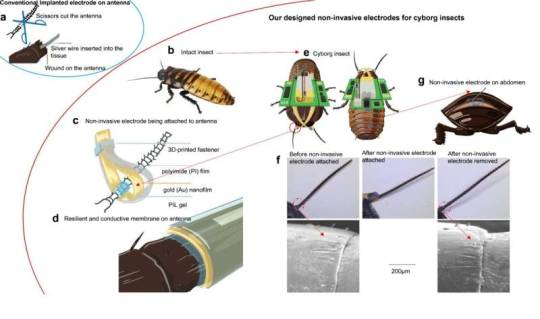
A non-invasive way to turn a cockroach into a cyborg
A team of mechanical engineers at Nanyang Technological University in Singapore has found a way to electronically control cockroaches without injuring them. In their paper published in the journal npj Flexible Electronics, the group describes the new technology they used to remotely control the cockroaches and the benefits of doing so. Prior research teams have created a variety of cyborg cockroaches, but they all had one feature in common—they all involved attaching probes to the insect's nervous system—procedures that led to damage to the insect, and likely some degree of pain. In this new effort, the researchers noted that damaging cockroaches during attempts to control them results in a very short life expectancy, which then results in very little payoff for a lot of work. They also suggest such research is unethical because of the pain inflicted on the cockroaches. In this new effort, they have found a way to control cockroaches that does not involve cutting into them, resulting in a much longer lifespan.
Read more.
38 notes
·
View notes
Text
2024-05-01
Singapore
CPIB says fewer graft cases reported last year - but a higher proportion of the cases required investigation
Body of Vietnamese woman who arrived in Singapore just a week ago found in Clarke Quay river
31-year-old man jumps 15 storeys from HDB block after standoff with police - he had self-harmed ...probably yet another person with serious mental health issues
Preparatory work to connect Thomson-East Coast Line with Changi Airport to begin next year
29 motorists arrested for traffic offences in 6-week enforcement operation
Science
Track the ISS live!
Environment
Indonesian volcano eruption shuts more airports, with ash reaching Malaysia
Language
Why writing by hand is better for memory & learning
Technology
Major US newspapers sue OpenAI & Microsoft for copyright infringement
Economy
Zimbabwe’s ZiG is the world’s newest currency & the country's latest attempt to resolve a money crisis
Politics
Police clear pro-Palestinian protesters from Columbia University’s Hamilton Hall
Art
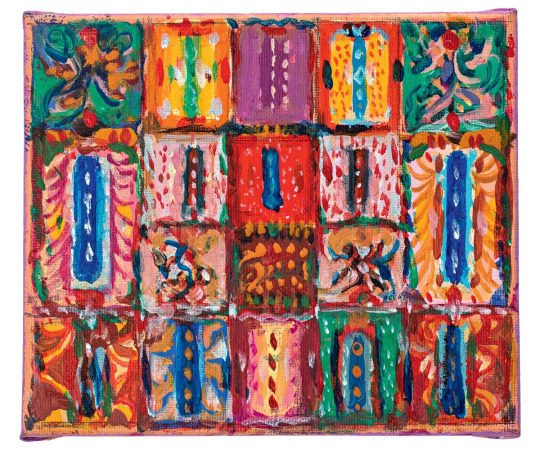
^ Flip it over to see what's on the back! - by my friend's father!
Finance
Binance founder Changpeng Zhao sentenced to 4 months' jail for allowing money laundering - another scumbag bites the dust... pity it's just for a short while!
Singapore: MAS says DBS may resume non-essential banking activities but higher capital buffer stays
Society
4 law enforcement officers killed & 4 wounded while serving warrant at North Carolina home - just another day in the US of A!
People
Singapore: Local actor/comedian Suhaimi Yusof warded at hospital after suffering stroke
Travel
Hotel guest cut badly by sharp pool tiles in Dorsett Singapore - hotel manager also tried to shirk responsibility after incident was reported
Singapore Heritage Festival on from now till 26 May
Bali-bound Scoot flight turns back to Changi after smoke detected in cabin
Transport
More than 800 Hyundai & Kia EVs in Singapore to undergo recall for electronics fault - after a terrible experience with Hyundai decades ago, this is a brand I'll never ever consider
Singapore: LTA to return 1st 2 new Bukit Panjang LRT trains to China plant for modifications
#transport#travel#people#society#finance#art#politics#economy#technology#language#environment#science#singapore
2 notes
·
View notes
Text
Mediation and Conciliation in Civil and Commercial Disputes: A New Horizon
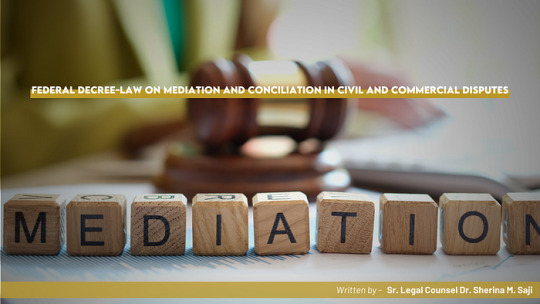
With the launch of the Mediation Rules by the Dubai International Arbitration Centre effective from 01 October 2023, the UAE has introduced a significant piece of legislation at the federal level, consolidating Mediation and Conciliation specifically in Civil and Commercial Disputes viz. Federal Decree Law №40 of 2023 (the “Decree-Law”) which will come into effect on 29 December 2023, thereby repealing Federal Law №6 of 2021 on Mediation in Civil and Commercial Disputes which regulated both the judicial and non-judicial Mediation; and Federal Law №17 of 2016, as amended by Federal Law №5 of 2021, which governs Conciliation and regulates the establishment of court-annexed Conciliation and Mediation centres for civil and commercial disputes; ushering in a new era for alternative dispute resolution (“ADR”) in the UAE.
By nature, the concept of Mediation and Conciliation is profoundly embedded in Arabic culture and Sharia law, as such, the Decree-Law is a welcome step equally for parties and lawyers alike to progress ADR in the UAE. This move aligns with the UAE’s commitment to signing the Singapore Convention on Mediation, announced in March 2022.
Overview
At the outset, Mediation may be conducted in all civil and commercial disputes capable of settlement without conflicting with the existing laws or the public order and morals prevailing in the UAE, without prejudice to the provisions of the local laws that regulate Mediation. This is in accordance with Article 8 of the Decree-Law, while Article 27 of the Decree-Law states about the exclusive competency of Mediation and Conciliation Centre (the “Centre”) to conciliate civil and commercial disputes (i) whose value does not exceed five million (5,000,000) dirhams; and (ii) between spouses or relatives up to the fourth degree, regardless of their value. The adversaries may agree to resort to the Centre for Conciliation of civil and commercial disputes whose value exceeds five million (5,000,000) dirhams, whether before a case is filed or while it is being heard.
That said, as outlined in Article 28 of the Decree-Law, certain disputes do not fall within the jurisdiction of the Centre viz. (i) urgent and interim orders and cases; (ii) cases to which the government is a party, (iii) rental cases heard before special rental dispute committees, (iv) labor cases, personal status cases; and (vi) any other cases decided to be heard before a Centre, committee or other entity of similar jurisdiction.
Establishment of Centres
The Federal Judicial Council (the “Council”) or the chairman of the local judicial authority may establish one or more Centre(s) for Mediation and Conciliation within the territorial jurisdiction of the first-instance courts; and shall issue pertinent regulations to govern the work and operations of the Centre(s). There is also scope for establishing special Centre(s) for Mediation and branches of foreign Mediation Centre(s); with court or the local judicial authority having supervisory authority on its working and formulating the general policies.
Remote Mediation and Conciliation Platform
Article 4 of the Decree-Law empowers the Mediators and Conciliators to conduct Mediation and Conciliation meetings through electronic means and remote communication, subject to regulations and procedures issued by the Minister of Justice, based on the approval of the Council or the chairman of the local judicial authority.
Mediators and Conciliators Accreditation Processes
The Federal Judicial Inspection Department or the local judicial authority shall maintain a roster for registering Mediators from amongst those registered in the experts’ schedule at the Ministry of Justice or with the local judicial authorities, and the expert Mediators named by a decision of the Council or the chairman of the local judicial authority. Normally they shall be selected from amongst retired members of the judiciary, lawyers registered in the schedules of practicing and non-practicing lawyers. Qualification includes practice of the profession for a period of not less than five (5) years prior to their registration in the non-practicing lawyers’ schedule, and other highly qualified experts and international experts in the legal and business fields, who are known for their expertise, integrity and impartiality. Furthermore, Article 15 of the Decree-Law allows appointment of any natural or legal person, known as Private Mediator, entrusted by the Parties with the task of Mediation to amicably resolve the dispute between them, and not registered on the Mediators’ Lists.
The appointment of Conciliators follows a procedure similar to employment. The Federal Judiciary or the president of the local judicial authority will establish the qualification for the post of a Conciliator. The Conciliators must take a legal oath before assuming their duties, and shall be subject to a specific compensation scheme.
Confidentiality and Non-disclosure
The documents and information submitted or agreements or concessions made by the parties to the disputes submitted for Mediation or Conciliation (the “Parties”), and Mediation and Conciliation procedures as a whole are treated with utmost confidentiality, as envisaged in Article 5 of the Decree-Law; except with the consent of the Parties, or as required by law. Exception further extents to document(s) prepared by the Mediator or the Conciliator and signed by the Parties, including the Settlement reached to resolve the dispute, in whole or in part, between them; and the documents and instruments necessary for its enforcement. Failure by the Mediator or Conciliator to adhere to the confidentiality and non-disclosure obligations stipulated herein, attracts disciplinary actions according to Article 40 of the Decree-Law, without prejudice to the provisions of civil and criminal liability.
Prohibitions on the Mediator and Conciliator
Article 6 of the Decree-Law prohibits the Mediator and Conciliator from acting as an arbitrator or expert in the dispute, or accepting to be an attorney in a dispute against any of the Parties regarding the subject matter of the dispute subject to Mediation or Conciliation, or anything arising from it, even after the completion of the Mediation or Conciliation procedures, unless the Parties agree otherwise. Prohibitions further extents to giving testimony against any of the Parties to the dispute regarding the subject matter of the dispute subject to Mediation or Conciliation, or anything arising therefrom, even after the completion of the Mediation or Conciliation procedures, unless authorized by the concerned party or the Parties agree otherwise, except in cases where the testimony is related to a crime; and in case of acting as a Mediator or Conciliator in a dispute where one of the Parties is a spouse or a relative up to the fourth degree by blood or marriage.
Parallel Mediation and Conciliation Structures
While the previous separate federal laws on Mediation and Conciliation laws are now consolidated, these two parallel structures continue to co-exist under the Decree-Law. Concerning Conciliation, under the court-annexed system, mandatory Conciliation is a prerequisite for specific types of disputes prior to litigation proceedings, and with regards to Mediation, voluntary process that can be initiated either through contractual agreement or by court referral, subject to the Parties mutual consent applies. Here, the chief difference is with the role of the “Mediator” opted by the Parties i.e., while in the Mediation process, the Mediator acts as a facilitator aiding the Parties to arrive at an agreement using the Mediation techniques; however, in the Conciliation process, the Mediator only suggests possible paths to the Parties in order to resolve the dispute. Precisely, both the structures share a common goal, which is amicable resolution of the disputes, whether before, or at the stage of the legal proceedings.
Consensual Mediation
In enforcing the agreement between the Parties made either before or after the occurrence of dispute, with the aim of resorting to Mediation for the Settlement of the dispute (“Mediation Agreement”), the Parties may directly resort to the Center to settle the dispute between them, before filing a lawsuit, as per Article 11 of the Decree-Law. This is Consensual Mediation, the initiation of which interrupts legal and judicial deadlines and only resume upon the completion of the Mediation, unless it is concluded by the Parties signing a Settlement Agreement. The procedures for Consensual Mediation are set out in Article 12 of the Decree-Law. In pursuance of Article 13 of the Decree-Law, the court before which a case is filed regarding a dispute brought before a Mediator in enforcing the Medication Agreement, shall decide suspension of the case until the completion of the Mediation procedures, if the defendant urges therefor before making any request or submission on the merits, unless the court finds that the Mediation Agreement is void or impossible to be enforced. The filing the case shall not however, preclude the initiation or continuation of Consensual Mediation procedures.
Court-Referred Mediation
Court-Referred Mediation occurs by virtue of a referral decision made by the subject-matter court competent to hear the lawsuit (“Competent Court”), at any stage of the case, whether proposed by the court with the Parties’ consent or upon their request. Article 14 (3) stipulates that the referral decisions issued by the Competent Court cannot be appealed by any ordinary or extraordinary means of appeal. Mediation shall end as per Article 21 of the Decree-Law if the Parties (i) sign a Settlement Agreement; (ii) agree to end the Mediation before reaching a Settlement Agreement for any reason; (iii) if one of the Parties informs to the Mediator or the Centre of their wish to participate in or continue Mediation; (iv) if the Mediator notifies the Centre, in writing or electronically, that the Mediation: (a) is futile and that there is no possibility of reaching a resolution to the dispute; (b) has been ended due to the absence of any of the Parties from two consecutive Mediation sessions without excuse; and (v) if the Mediation period expires without being renewed.
In all the above cases, the Mediator shall, upon the end of Mediation, deliver to each party any memoranda and documents they presented, and they may not retain them or copies thereof, and shall send a written or electronic report to the Centre on the result of the Mediation within three (3) working days from the date of ending the Mediation for any reason. The Centre shall notify the Parties and the Competent Court, within three (3) days, of the report and the result of the Mediation.
End of Mediation
Mediation if concluded successfully can end by signing the Settlement Agreement. The ratification process of the Settlement Agreement follows three tiers. i.e., from the Mediator to the Centre and finally to the Court. The Mediator shall submit a report to the Centre along with the Settlement Agreement, which the Centre shall send it to the Court within 3 working days. As a final step, the Court shall ratify the Settlement Agreement and issue a decision to end the dispute, wholly or partially, at a session to be scheduled within seven (7) working days from the date of its receipt of the Settlement Agreement. After its ratification, the agreement shall become a writ of execution and an exequatur shall be affixed thereto upon the request of all Parties or one of them, in light of the terms of the agreement submitted to it, and shall be executed according to the procedures stipulated in the Federal Civil Procedure Law.
That said, the aggrieved party has the rights to object or challenge ratification of the Settlement Agreement, by filing an annulment case before the competent Court. The party seeking annulment shall prove one of the reasons viz. (i) lack of legal capacity of one of the Parties to the Settlement Agreement or diminished capacity at the time of its conclusion, (ii) no Settlement Agreement or if the agreement was void or voidable, or if it was made after the expiry of the Mediation period; or (iii) if one of the Parties was unable to present their defence due to invalid service of process or notification of the Mediation procedures or due to them not having been aware thereof for any other reason beyond their control. Pursuant to Article 24 (2) of the Decree-Law, the judgment issued by the court in the annulment case shall be final and can only be appealed through cassation.
Settlement before the Conciliator
If a settlement is reached between the Parties before the Conciliator, either in whole or in part, this shall be recorded in a minutes signed by the Parties and the Conciliator. These minutes shall be ratified by the Supervising Judge, have the force of a writ of execution and the same binding force of court judgments, and are not subject to appeal by any means of appeal. Upon ratification, the minutes shall be affixed with an exequatur upon the request of all or any of the Parties, free of charge, and shall be executed in accordance with the procedures stipulated in the Federal Civil Procedure Law.
Conclusion
The enactment of the Decree-Law marks a pivotal moment for Mediation and Conciliation in the UAE, offering a unified platform for resolving disputes not just in property and construction disputes but in other Civil and Commercial disputes as well.
Recommendation
Whether you are navigating construction disputes, real estate intricacies, or commercial contracts, having a reliable Dubai Lawyer is crucial in providing comprehensive services across various legal domains. Dubai Lawyers and Dubai Law Firms play a pivotal role in addressing a spectrum of legal needs. Considering the legal landscape in Dubai, individuals and businesses can benefit from the expertise of seasoned Dubai Lawyers.
Our record of representing clients in Mediations and ADR procedures throughout the UAE speaks volume. Thus, we recommend for a comprehensive understanding and implementation of the new legislation, consider consulting the seasoned lawyers at Al Dhaheri International Advocates & Legal Consultants, renowned for their expertise in mediation and alternative dispute resolution throughout the UAE.
Written by — Dr. Sherina M. Saji
#Law Firm#Dubai Lawyer#Lawyers in Dubai#Dubai Lawyers#Best Lawyers in Dubai#Best Lawyers in UAE#Best Advocates in Dubai#Best Lawyers in Sharjah#Dubai Law Firms#Dubai Law Firm#RERA Dubai
2 notes
·
View notes